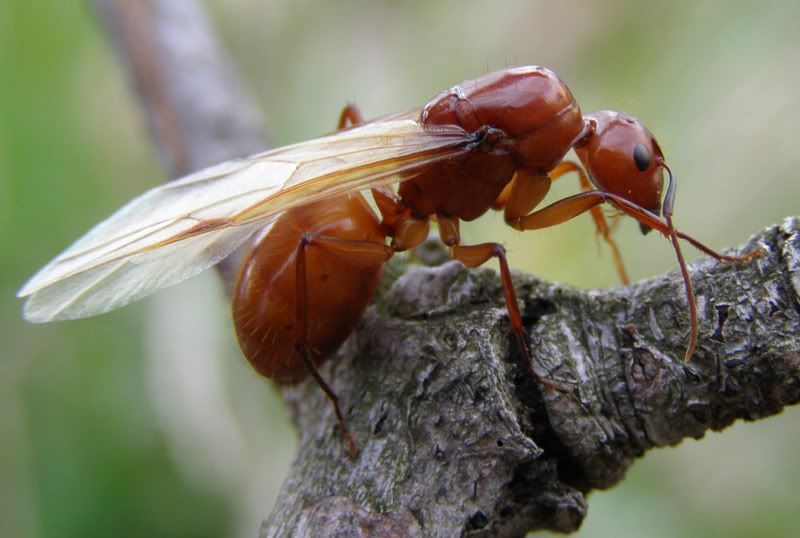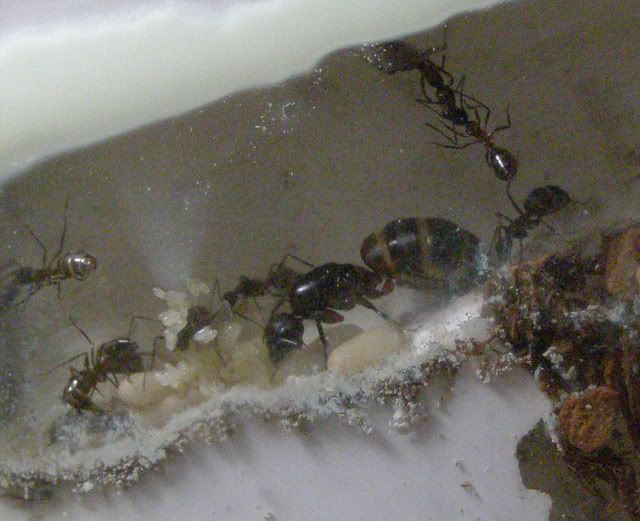Two days ago we suddenly had some warm weather. High 80's low 90's roughly. And there was something about the day, maybe it's just New Jersey but there was a grassy, pool smell in the air. I don't know what it is but it's just something I pick up on. And I mention these things because Camponotus around me usually starts flying on days like this.
Sure enough I found a few males but this was the first day of the year they could fly... so it wasn't anything special, just a few males and a queen to some one of the smaller species. The main flights will pick up next week or after this odd storm system passes over the area.
Having nuptial causes colonies to become territorial. Firstly they want to make their range safe for queens and males to fly away from the nest. Secondly to prevent new queens and males from other colonies from founding on their land. These arguments continue well into the daylight hours when Camponotus usually don't forage.
This Camponotus pennsylvanicus major has the battle scars of a recent skirmish. The smaller ants are either C. nearcticus or C. caryae. They hold on to their opponent well into death. Both are missing their abdomen and will likely stay attached to this ant until she dies.
This is the same ant but there were a few hanging around the same general area. C. nearcticus and C. caryae have small colonies of 300 ants or so, while the larger C. pennsylvanicus is known to have 10,000 or more.
I didn't see to much fighting to be honest but it seemed like the larger species was moving into the same dead branch as the smaller species. Ants gripped in combat fell off the tree at a slow pace.
The smaller species wasn't without some victory. This ant C. penn major isn't dead yet but is missing most of her limbs and without her antenna she will die. I forget why losing the antenna causes the ant to die exactly but I know it's fatal to them.
Be on the look out for Camponotus queens both big and small over the next couple of weeks.
In Camponotus queens tend to be the largest, or equally as big as the major workers, in the colony. Unlike the majors, their thorax is more developed looking and rounded. Queens will always have wing scars too. These are where the wings used to be attached to the thorax.
They come in a variety of colors depending on the species. The abdomen isn't always as swollen looking as in the photo above. The white "stripes" as people like to call them are actually a stretchable membrane under the plates that make up the abdomen.
Queens are not always common but the larger species are very easy to spot. After a nuptial flight they'll be walking around for as much as 24 hours before settling down. The sooner the better. Regardless of preference to nest in soil or in dead wood, because of their size they're almost always seen walking around or found under objects, rocks, logs, etc...
I occasionally find a young colony (less than 100 ants) all nesting under a log, having been displaced by a larger colony. Young colonies like this are easily collected if you're quick enough. They're the result of a larger colony moving on in. Rather than duke it out one colony flees.





